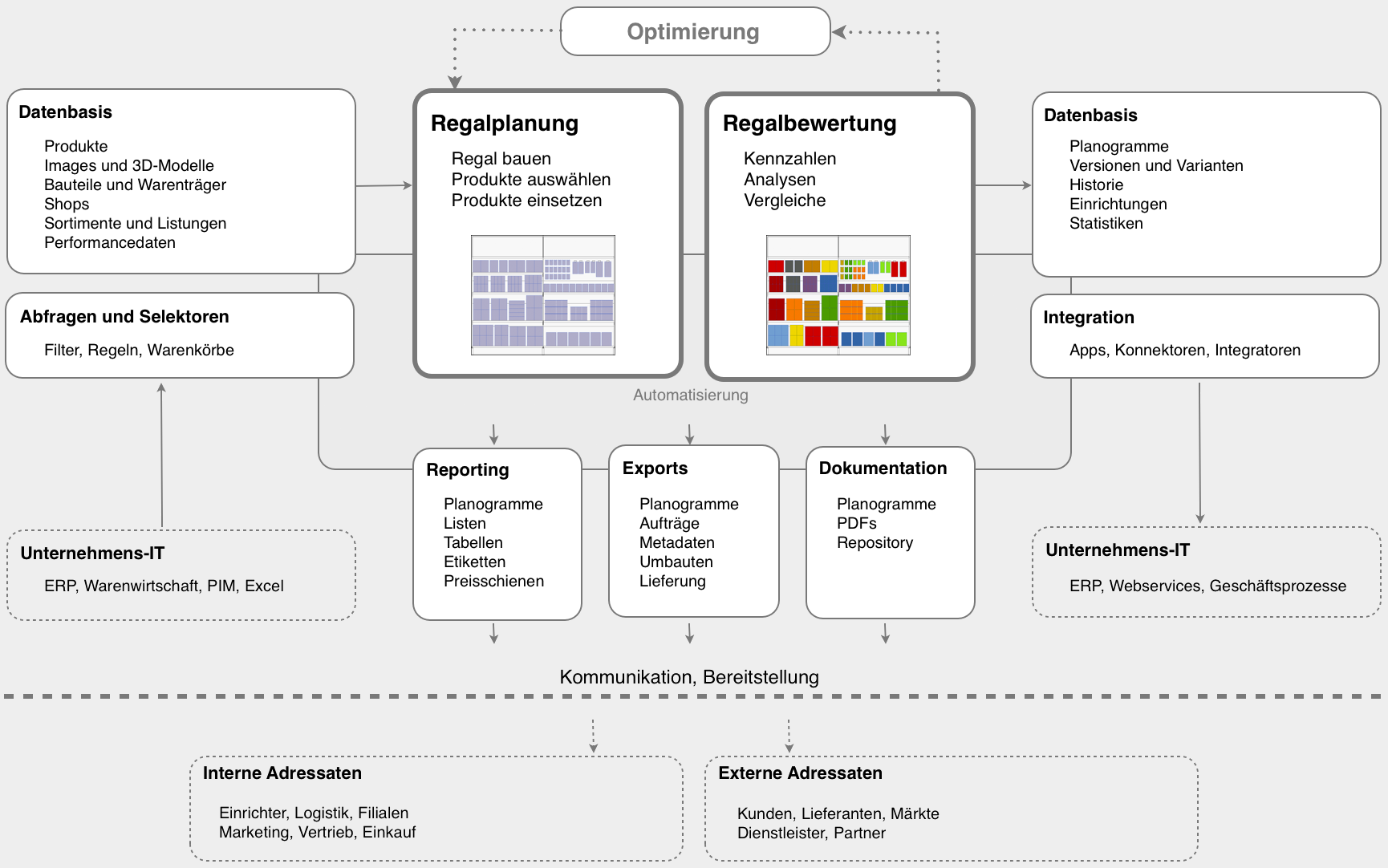With XPace planogramming, each product will be positioned at the point-of-sale following logistical, financial, geometric, visual, and psychological aspects, taking space and time into account. XPace modules cover the various requirements of space management and planogramming.
XPace is available in the following modules
The modules differ due to the features provided:
| Basic | Professional | Enterprise | |
|---|---|---|---|
| Rack design: Create racks and shops, place and arrange products, basic reporting |
|||
| Rack optimization: Benchmarks, analyses, optimization, and extended reporting |
|||
| Deployment: Enterprise Server with web publishing and presentation |
The feature overview outlines the references between main feature scopes and the XPace modules. You can upgrade to a more feature-rich package at any time.
Additional packages extend the functionality:
- XPace Mockup: Designing your own product displays
- XPace Queries: Queries for Assortment Planning
- XPace Kiosk: Kiosk systems and information terminals
- XPace Locate: Localization data for article searches in the market
- XPace Scripting: Automation through macros and rules
- XPace Metadata: Metadata management and release procedures
- XPace Elastics: Elastic deformation under weight load
- XPace Mandator: Multi-client capability
- and more…
Platforms
XPace runs on the following platforms and systems:
- Windows 32 bit
- Windows 64 bit
- Mac OS X 64bit
Data sources and file formats are identical and fully compatible for all modules and packages. XPace provides space management for heterogeneous environments.
Data Sources for Import and Export

Shelf planning is based on information that already exists elsewhere in the company: Data about products, fixtures, markets and shelves. In XPace Space Management, these informations meet to build concrete rack allocation plans. Graphic planograms and assembly lists are the basis for shelf construction in the real world. They are also used for documentation and communication and for the permanent development of the point-of-sale over time.
The data from shelf planning result in communication processes that provide the internal and external addressees of shelf planning with the necessary information. On the one hand, communication can take place in the classical way (sending e-mails of PDF reports or Excel tables), but today, actual planograming data should also be provided online on a server.
Other topics:
Use Cases • Features • Space Management Foundations

